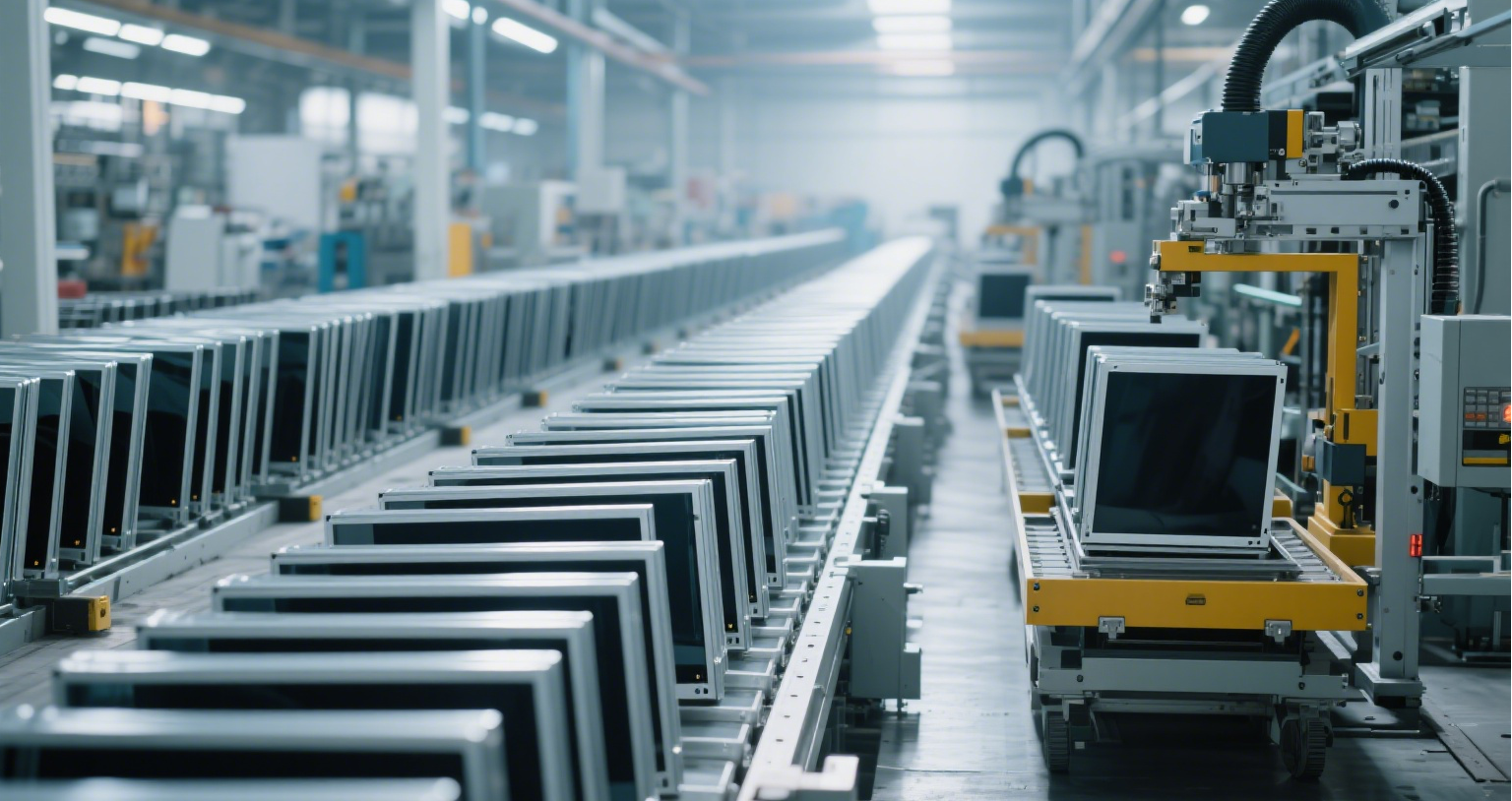
In today’s world,where the quest for an immersive visual experience is paramount,narrow-bezel displays have become the norm.However,behind the sleek and thin bezels lies a significant manufacturing challenge:maintaining a precision tolerance of±0.01 millimeter for metal components.This level of precision is not just about aesthetics;it directly impacts the integrity of the screen display,the rigidity of the structure,and the overall lifespan of the device.
Consider a 17-inch display with a bezel thickness of just 0.8 millimeters.If the error at a critical assembly point exceeds±0.01 millimeter—far thinner than a human hair(approximately 0.07 millimeters)—visible gaps,misalignments,or even stress-induced deformations can occur.This would completely undermine the intended borderless visual effect.
The Shift from Traditional Methods to CNC Machining
Traditional die-stamping and basic machining methods simply cannot meet such stringent precision requirements.Factors such as mold wear,material spring-back,and cumulative errors from multiple processes can easily lead to precision loss.In contrast,CNC machining,especially advanced turning and milling for precision-machined metal parts,has emerged as a key solution.Its digital precision-control capabilities make it the ideal tool for overcoming the±0.01-millimeter tolerance challenge.
Essential Factors for Achieving±0.01mm with CNC Machining
• Multi-Axis and Compound Machining:Modern five-axis CNC machining centers can complete all the complex surfaces,holes,and grooves of bezel components in a single setup.This eliminates the repeated positioning errors that come with multiple setups and ensures overall precision coordination of the parts.
• Ultra-High-Precision Equipment:Key equipment must feature an ultra-rigid structure,a precision feedback system with nanometer-level resolution,and advanced thermal-compensation technology.Combined with high-performance cutting tools and optimized machining parameters,these features effectively counteract disturbances such as cutting forces,tool wear,and minor thermal deformation.
• Rigorous Process and Environmental Control:
• Precision Measurement Loop:Use ultra-high-precision coordinate-measuring machines(CMM)to conduct immediate inspections and data feedback on critical dimensions during and after machining.Compensatory machining is performed when necessary to create a closed-loop control between manufacturing and measurement.
• Environmental Stability:Maintain the machining environment at a strict constant temperature(usually±1°C)and equip it with professional vibration-damping foundations or devices to minimize the impact of environmental factors on equipment stability.
• Material and Process Stability:Select high-quality,homogeneously structured materials like aluminum alloy and apply rigorous stress-relief processes to ensure geometric stability during machining.
Unique Challenges of Large-Scale Metal Part Machining
For larger-sized display bezels or base components,balancing overall rigidity with micrometer-level precision at critical connection points is particularly challenging.This requires process engineers to meticulously plan machining paths,optimize clamping points,and use finite-element analysis(FEA)to simulate and predict machining deformation,applying compensation in the programming phase.
Precision Manufacturing:The Backbone of Visual Excellence
Achieving a tolerance of±0.01 millimeter is no small feat;it represents the pinnacle of metal precision-part machining capabilities.Every precise calculation and execution of the CNC tool path,and every real-time feedback and adjustment from in-line measurements,provide a solid engineering foundation for the successful implementation of narrow-bezel display designs.This relentless pursuit of microscopic precision ultimately delivers a seamless and expansive visual experience to users.
When you gaze at a nearly borderless display screen,know that behind that thin bezel lies a micro-scale marvel created by the combined power of precision-manufacturing technology and engineering ingenuity.The dedication to micrometer-level precision unlocks endless possibilities for visual excellence.